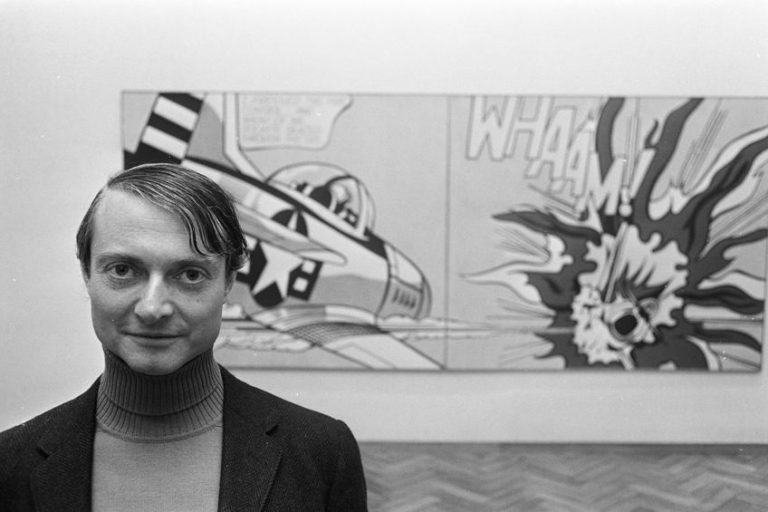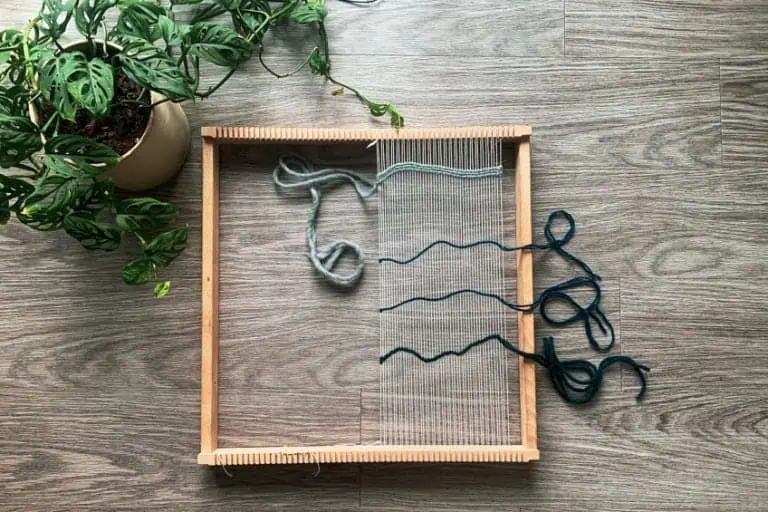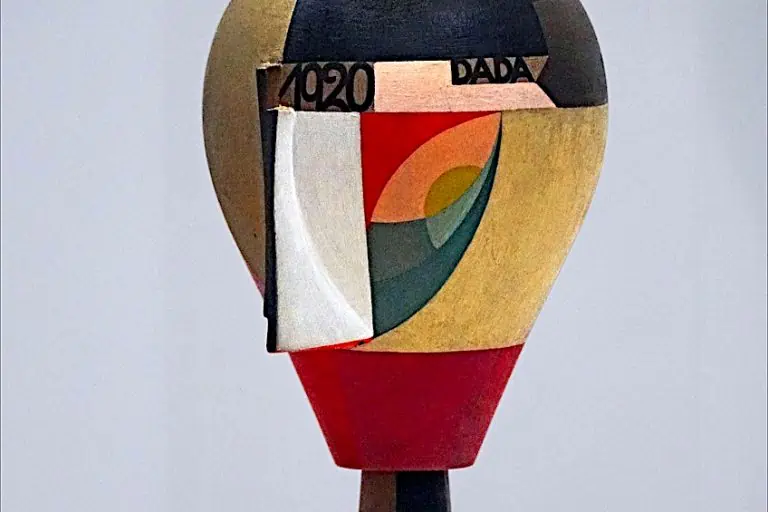Space in Art – How Artist Use and Define Visual Areas
This post may contain affiliate links. We may earn a small commission from purchases made through them, at no additional cost to you.
What is space in art and how do artists effectively use it in their compositions? Based on the definition of space in art, along with line, color, texture, value, form, and shape, it is one of the seven elements of art. In this article, we shall be learning more about this specific element, as well as looking at notable space in art examples to gain a better understanding of the subject.
Table of Contents
What Is Space in Art?
Space in art refers to the areas around, within, or between the various components in a composition. It can be defined as either two or three-dimensional space, open or closed space, shallow or deep space, and positive or negative space.
Unlike the other elements of art, space is intrinsic to any piece and is what Frank Lloyd Wright once referred to as the “breath of art”.
 Modern 3D artist’s impression of Seacliff House. It was designed in 1945 by Frank Lloyd Wright for the Morris family, but was never built; Hervé GREGOIRE, CC BY-SA 4.0, via Wikimedia Commons
Modern 3D artist’s impression of Seacliff House. It was designed in 1945 by Frank Lloyd Wright for the Morris family, but was never built; Hervé GREGOIRE, CC BY-SA 4.0, via Wikimedia Commons
Space in art can be seen in paintings, photographs, sculptures, and architecture. Even many renowned musicians believe that music is the space between the notes and sounds more than the notes themselves. Artists are able to utilize this element to make one object in space seem closer to you than another by drawing it larger than the other object. Let us now look at a few of the different types of space that artists play with.
Positive and Negative Space
Recognizing the relationship between negative and positive space is crucial for producing good artistic compositions. An artist can achieve a sense of motion, depth, and intensity inside an artwork by altering the balance between the two. “Positive space” is the space occupied by the primary object or subject and “negative space” refers to the unoccupied or empty space surrounding that object or subject.
Positive space is the foreground, whereas negative space can be thought of as the background. Negative space is utilized to generate balance, contrast, and depth in an artwork. We typically associate “positive” with light and “negative” with dark. This does not always apply to every artwork, though. You could, for instance, create a black mug on a white canvas. Because the mug is the subject, we would still not necessarily term it negative: while black value is often regarded as a negative value, the cup’s space is considered positive.
Negative spaces in three-dimensional art are often the open or unfilled areas of the composition. For instance, an abstract sculpture may have a hole in the center, which is referred to as negative space. Negative space may have a significant impact on two-dimensional painting. For example, the Chinese landscape painting style is typically basic compositions using black ink with large swaths of white. Landscape in the Style of Yan Wengui (c. Ming Dynasty) by Dai Jin, a Ming Dynasty painter, exemplifies this use of negative space. This type of negative space suggests a continuance of the image and provides a feeling of peace to the artwork. Negative space is also an important component in many abstract artworks.
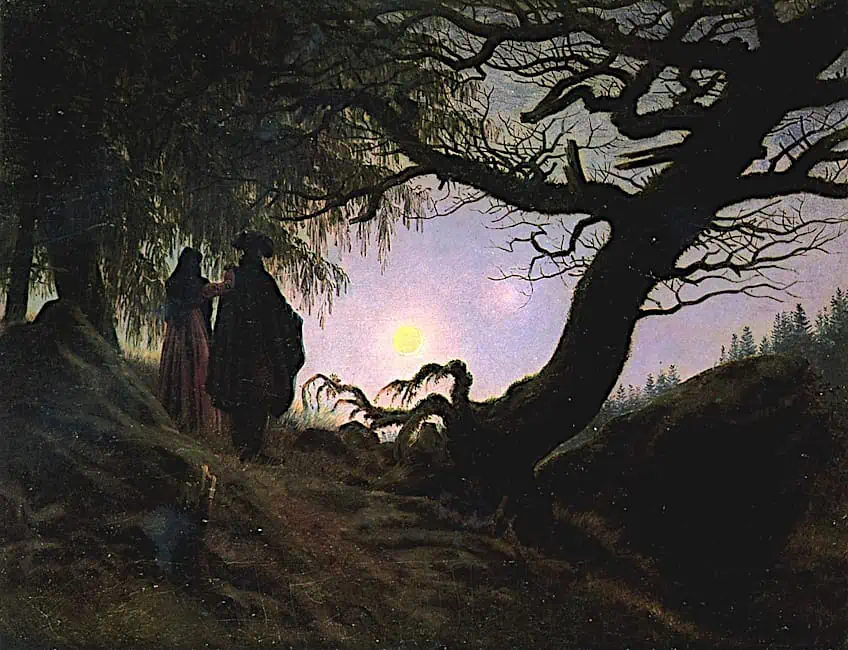 Man and Woman Contemplating the Moon by Caspar David Friedrich (c. 1824); Caspar David Friedrich, Public domain, via Wikimedia Commons
Man and Woman Contemplating the Moon by Caspar David Friedrich (c. 1824); Caspar David Friedrich, Public domain, via Wikimedia Commons
A composition is usually tilted to one side, or towards the bottom or top. Even if the forms have no specific meaning, they can be utilized to guide the observer’s eye, accentuate a single aspect of the piece, or convey motion. Piet Mondrian was a virtuoso of spatial composition. His spaces are like panels in a stained-glass window in his entirely abstract compositions, for example, his Composition C (1935). He employs negative space to cut out an abstracted landscape in his Summer Dune in Zeeland (1910) painting, and in Still Life with Gingerpot II (1911), Mondrian isolated and emphasized the negative space of the curving pot with stacked linear and rectangular shapes.
 Still Life with Gingerpot II by Piet Mondrian (1912); Piet Mondrian, Public domain, via Wikimedia Commons
Still Life with Gingerpot II by Piet Mondrian (1912); Piet Mondrian, Public domain, via Wikimedia Commons
Space and Perspective
Perspective in art is achieved by the thoughtful use of space. For example, in a linear perspective design, artists establish the illusion of space to suggest that the image is three-dimensional. They do this by making sure that certain lines extend all the way to the vanishing point. A tree in the foreground of a scene may look big, yet the mountains in the background are small by comparison.
Even though we know that the tree cannot be bigger than the mountain, the choice of size provides the image with perspective and creates a sense of space. Similarly, an artist may opt to lower the horizon line in the image. The negative space provided by the additional amount of visible sky can enhance the perspective and give the observer the impression that they can literally walk into the composition.
Thomas Hart Benton excelled in distorting space and perspective, as seen in his artwork Spring Tryout (1934).
 Spring Tryout by Thomas Hart Benton (1946); Thomas Hart Benton, Public domain, via Wikimedia Commons
Spring Tryout by Thomas Hart Benton (1946); Thomas Hart Benton, Public domain, via Wikimedia Commons
Open and Closed Space
The arrangement of components inside a composition with respect to the boundaries of the image plane is referred to as open and closed space in art. An open-space composition is one in which the components are placed in such a way that the eye may easily go beyond the boundaries of the image plane. This gives the piece a sense of spaciousness and openness.
The term “open space” can imply a sense of freedom, spaciousness, or immensity. A landscape painting with the sky and horizon line extending beyond the canvas’s boundaries is an example of free space in art.
 Madonna of Chancellor Rolin by Jan van Eyck (c. 1435); Jan van Eyck, Public domain, via Wikimedia Commons
Madonna of Chancellor Rolin by Jan van Eyck (c. 1435); Jan van Eyck, Public domain, via Wikimedia Commons
A closed space composition is one in which the components are organized in such a manner that they occupy the image plane and prevent the eye from moving freely further than the edges. This gives the composition a sensation of confinement, containment, or closure. Closed space can offer a sense of security, solidity, or restriction. A portrait painting is an illustration of confined space in art since the person occupies the entire canvas and there isn’t any open space surrounding them. In a composition, closed and open space may both be employed to produce contrasts and balance, as well as to express a variety of feelings and ideas.
The Use of Physical Space
Artists, regardless of media, frequently consider the area in which their artwork will be presented as part of the overall aesthetic impression. An artist who works in flat materials can expect their prints or paintings to be hung on the wall. They may not have control over surrounding things, but they can imagine how it might appear in a typical house or office. They may also create a series that is supposed to be exhibited in a certain order.
Sculptors, especially those working on a big scale, usually examine the installation location while they create. Is there a nearby tree? At what time of day will the sun be visible? What is the size of the room? An artist can utilize the surroundings to guide their approach depending on where they are.
Public art installations are good examples of how to use settings to frame and combine positive and negative areas.
 Release by Marco Cianfanelli (2012); Robbie Aspeling, CC BY-SA 3.0, via Wikimedia Commons
Release by Marco Cianfanelli (2012); Robbie Aspeling, CC BY-SA 3.0, via Wikimedia Commons
Notable Space in Art Examples
To get a better understanding of how artists have used space in art, we will now look at a few notable space in art examples. Despite all working in quite different styles and movements, all of these artists recognized the importance of space as one of the classic elements of art. Each artist has applied this element in a unique manner, proving the versatile nature of this element.
Las Meninas (1856) by Diego Velázquez
| Artist | Diego Velázquez (1599 – 1660) |
| Date Created | 1856 |
| Medium | Oil on canvas |
| Dimensions (cm) | 318 x 276 |
| Current Location | Museo Nacional del Prado, Madrid, Spain |
This famous painting by Diego Velázquez is a portrait of a royal Spanish family. The use of space in this artwork is designed to create a feeling of hierarchy and depth. The figurines are grouped in a layered composition that attracts the viewer’s attention to the picture, with the central figure of the Infanta sticking out as the point of focus. The incorporation of mirrors and reflections in the backdrop adds to the scene’s depth and intricacy.
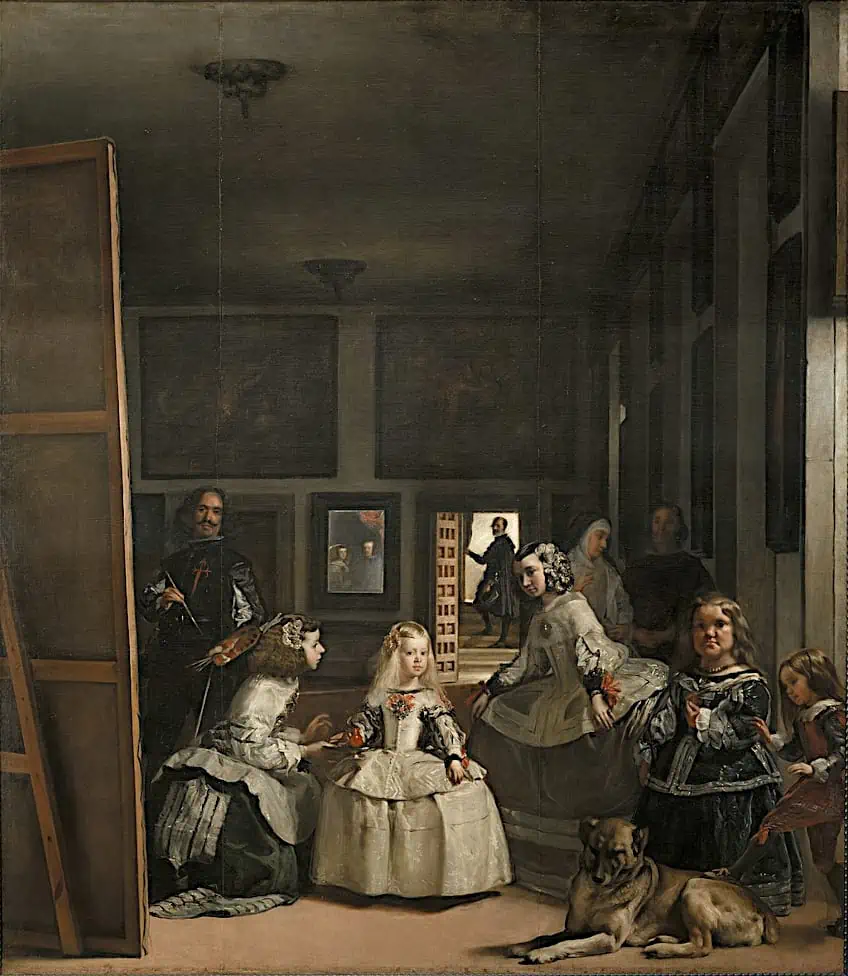 Las Meninas (The Maids of Honor) by Diego Velázquez (1656-57); Diego Velázquez, Public domain, via Wikimedia Commons
Las Meninas (The Maids of Honor) by Diego Velázquez (1656-57); Diego Velázquez, Public domain, via Wikimedia Commons
The Starry Night (1889) by Vincent van Gogh
| Artist | Vincent van Gogh (1853 – 1890) |
| Date Created | 1889 |
| Medium | Oil on canvas |
| Dimensions (cm) | 74 x 92 |
| Current Location | The Museum of Modern Art, New York City, United States |
This is one of Vincent van Gogh’s most famous pieces and was produced during a very difficult period of the artist’s life. The use of space in this artwork is primarily concerned with conveying a feeling of distance and depth. The night sky’s whirling stars and clouds appear to fade into the distance, while the darker foreground gives contrast and stability. The church’s spire and little settlement in the distance add a sense of size and proportion to the composition, adding to the impression of depth.
 The Starry Night by Vincent van Gogh (1889); Vincent van Gogh, Public domain, via Wikimedia Commons
The Starry Night by Vincent van Gogh (1889); Vincent van Gogh, Public domain, via Wikimedia Commons
Composition VIII (1923) by Wassily Kandinsky
| Artist | Wassily Kandinsky (1866 – 1944) |
| Date Created | 1923 |
| Medium | Oil on canvas |
| Dimensions (cm) | 140 x 201 |
| Current Location | Solomon R. Guggenheim Museum, New York City, United States |
Kandinsky’s utilization of space was very intuitive and exploratory, frequently expressing his fascination with music and the manner in which sounds and rhythm can generate emotional effects. In this painting, the utilization of space is centered on generating a sense of motion and rhythm. The abstract forms and colors are placed in a vibrant composition that appears to throb and flow, with each element enhancing the overall feeling of energy and movement in the work. The utilization of negative space also contributes to the composition’s impression of balance and harmony.
 Composition VIII by Wassily Kandinsky (1923); Wassily Kandinsky, Public domain, via Wikimedia Commons
Composition VIII by Wassily Kandinsky (1923); Wassily Kandinsky, Public domain, via Wikimedia Commons
The Persistence of Memory (1931) by Salvador Dali
| Artist | Salvador Dali (1904 – 1989) |
| Date Created | 1931 |
| Medium | Oil on canvas |
| Dimensions (cm) | 24 x 33 |
| Current Location | The Museum of Modern Art, New York City, United States |
In this painting, the utilization of space is designed to create a dreamy, surreal feeling. The melting clocks and warped things appear to defy physics, producing a sensation of confusion and absurdity. The utilization of empty space and unclear shapes also contributes to the composition’s overall impression of weirdness and surprise. Dali also utilized space to create a feeling of depth and dimensions in his paintings, frequently combining flat, abstract shapes with lifelike, three-dimensional forms.
Nighthawks (1942) by Edward Hopper
| Artist | Edward Hopper (1882 – 1967) |
| Date Created | 1942 |
| Medium | Oil on canvas |
| Dimensions (cm) | 84 x 152 |
| Current Location | School of the Art Institute of Chicago, Illinois, United States |
This is regarded by many to be Hopper’s best work. The use of space in this picture is intended to evoke a sense of loneliness and urban solitude. The contrast between the vacant city street outside the diner and the busy, confined space within heightens the sense of loneliness and detachment. The use of shadow and light also contributes to the composition’s impression of depth and dimensionality.
 Nighthawks by Edward Hopper (1942); Edward Hopper, Public domain, via Wikimedia Commons
Nighthawks by Edward Hopper (1942); Edward Hopper, Public domain, via Wikimedia Commons
Elements of Art Overview
That brings us to the end of this article on space art. We have discovered that as one of the seven elements of art, space can be used to create a sense of perspective and depth. Our space in art examples has revealed the array of creative ways in which space can effectively be utilized in artworks across the board. Have you been inspired to try to use space more creatively in your art?
Frequently Asked Questions
What Is the Definition of Space in Art?
Space is regarded as one of the classic seven elements of art. Positive space refers to the things or forms in a composition, whereas negative space alludes to the empty areas around or between those objects. Another way to look at it is that objects in the foreground are usually considered positive space, and the spaces around them are usually regarded as negative space.
How Can Space Be Used to Improve an Artwork?
Artists can use negative space to attract the audience’s eye to a certain section of the composition. This may aid in the creation of a focal point, as well as a sense of equilibrium and harmony within the painting. Artists can create a beautiful feeling of equilibrium and harmony by dispersing the composition’s parts equally throughout the area. In an artwork, space may be exploited to create a feeling of movement and rhythm. Artists can produce a dynamic and exciting composition by combining overlapping forms, diagonal lines, and various sizes.
In 2005, Charlene completed her wellness degrees in therapeutic aromatherapy and reflexology at the International School of Reflexology and Meridian Therapy. She worked for a company offering corporate wellness programs for several years before opening her own therapy practice. In 2015, she was asked by a digital marketer friend to join her company as a content creator, and it was here that she discovered her enthusiasm for writing. Since entering the world of content creation, she has gained a lot of experience over the years writing about various topics such as beauty, health, wellness, travel, crafting, and much more. Due to various circumstances, she had to give up her therapy practice and now works as a freelance writer. Since she is a very creative person and as a balance to writing likes to be active in various areas of art and crafts, the activity at acrylgiessen.com is perfect for her to contribute their knowledge and experience in various creative topics.
Learn more about Charlene Lewis and about us.



